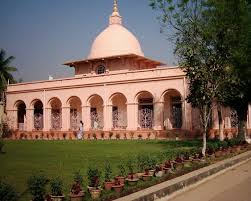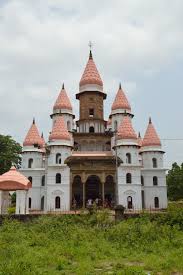Baijnath Temple, Himachal Pradesh
Baijnath Temple is one of the most significant and ancient Shiva temples in India, located in the Kangra district of Himachal Pradesh. Dedicated to Lord Shiva, the temple is renowned for its exquisite Nagara-style architecture and mythological significance. It is believed that the temple houses one of the 12 Jyotirlingas, making it a highly revered pilgrimage site. The serene ambiance, along with the majestic Dhauladhar mountain range in the backdrop, adds to the spiritual charm of the temple.
Location and Accessibility
- 📍 Location: Baijnath town, Kangra district, Himachal Pradesh
- 🌐 Distance from major cities:
- Kangra: 50 km
- Dharamshala: 55 km
- Palampur: 16 km
- Pathankot Railway Station: 115 km
- Gaggal Airport (Dharamshala): 65 km
- 🚗 How to Reach:
- By Road: Well-connected by buses and taxis from major towns.
- By Rail: Nearest railway station is Pathankot (115 km).
- By Air: Gaggal Airport (Kangra Airport) is the nearest airport.
Historical and Mythological Significance
Mythology
- According to Hindu mythology, it is believed that the temple marks the site where Ravana, the demon king, worshipped Lord Shiva.
- As per the legend, Ravana offered his ten heads to Lord Shiva in penance to gain power and invincibility. Pleased with his devotion, Lord Shiva appeared and granted him divine powers.
- The temple is thus considered sacred, as it is believed to be the place where Ravana’s intense penance took place.
History
- The Baijnath Temple was constructed in 1204 CE by two local merchants named Ahuka and Manyuka, who were ardent devotees of Lord Shiva.
- The inscriptions on the temple walls reveal that the temple has been a place of continuous worship since its establishment.
- Despite multiple invasions and natural calamities, the temple has stood the test of time, showcasing its architectural resilience.
Architecture and Design
- Style: The temple is built in the Nagara architectural style, characterized by its tall shikhara (spire) and intricately carved stone walls.
- Sanctum: The sanctum houses a lingam representing Lord Shiva, which is worshipped by devotees.
- Carvings and Sculptures: The temple walls feature detailed carvings of Hindu deities, floral motifs, and geometric patterns.
- Mandapa: The temple has a large pillared hall (mandapa) with beautifully sculpted stone pillars and beams.
- Shikhara: The shikhara rises majestically above the sanctum and is adorned with intricate carvings depicting mythological scenes.
- Temple Complex: The temple complex has smaller shrines dedicated to Goddess Parvati, Lord Ganesha, and Lord Kartikeya.
Religious Significance and Rituals
- Deity: The presiding deity is Lord Shiva, worshipped in the form of a Jyotirlinga.
- Puja and Aarti:
- Morning Aarti: 6:00 AM – 7:00 AM
- Evening Aarti: 6:00 PM – 7:00 PM
- Special Occasions:
- Maha Shivaratri: The temple attracts thousands of devotees during this festival.
- Shravan Maas: The month of Shravan (July-August) is considered highly auspicious for Shiva devotees.
- Nag Panchami: The temple sees a large influx of pilgrims on this day.
Timings and Entry
- 🕰️ Temple Timings:
- Summer: 5:00 AM – 9:00 PM
- Winter: 6:00 AM – 8:00 PM
- 💵 Entry Fee: Free
- 📸 Photography: Allowed outside the temple, but restricted inside the sanctum.
Nearby Attractions
While visiting Baijnath Temple, you can explore several nearby tourist destinations:
- 🌿 Palampur Tea Gardens: (16 km) Famous for its scenic tea plantations.
- 🌲 Bir-Billing: (30 km) Known for paragliding and adventure activities.
- 🏞️ Andretta Pottery and Art Gallery: (20 km) An art colony with beautiful pottery artifacts.
- 🌄 Kangra Fort: (50 km) A historical fort with magnificent views of the valley.
- 🛕 Chamunda Devi Temple: (30 km) Another significant religious site dedicated to Goddess Chamunda.
Festivals and Celebrations
- Maha Shivaratri:
- Celebrated with grandeur, attracting thousands of devotees.
- Special pujas, aartis, and bhajans are organized throughout the day.
- Navratri:
- The temple witnesses a large footfall during Navratri, with special prayers and religious events.
- Annual Fair:
- An annual fair is held in Baijnath town, which draws pilgrims and tourists alike.
Best Time to Visit
- The best time to visit Baijnath Temple is between March and June or September and November.
- Avoid visiting during the monsoon season, as the region experiences heavy rainfall.
Tips for Visitors
- 🧣 Dress Modestly: It is advisable to wear traditional or modest attire while visiting the temple.
- 🚫 Footwear: Footwear is not allowed inside the temple premises.
- 📸 Photography: While the temple’s exterior can be photographed, photography inside the sanctum is restricted.
- 💡 Facilities:
- Restrooms and basic amenities are available nearby.
- Several shops outside the temple sell prasad, rudraksha, and religious souvenirs.




